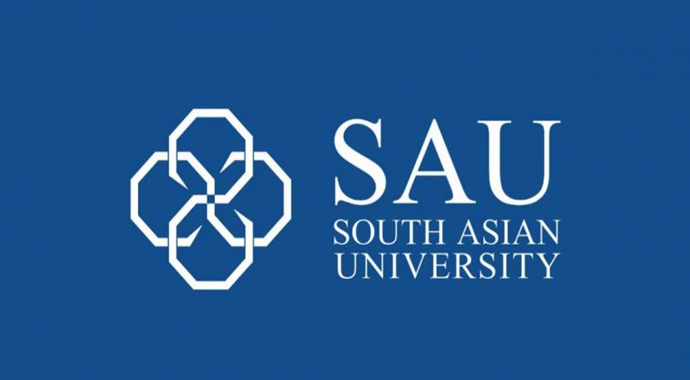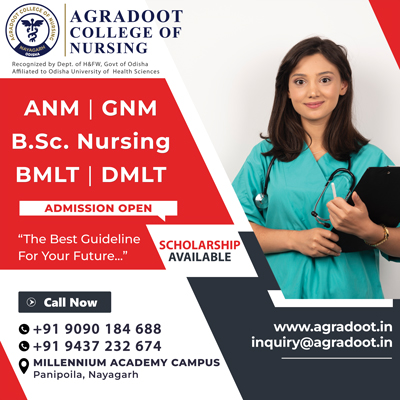Message by the President of SAU
It gives me immense pleasure to share with you some developments and achievements that have marked a period of growth and excellence for South Asian University. As an institution built on the foundation of regional cooperation and academic excellence, we continue to thrive, thanks to the confidence and support of the SAARC member states.
Our journey is one of collaboration and shared vision, and the commitment of SAARC member states is a testament to the trust they place in us. Their continuous support empowers us to reach new heights in education, research and innovation. We remain dedicated to upholding this confidence by delivering quality education and fostering an environment that promotes regional harmony and development.
We are proud to announce the successful conduct of the SAARC-wide entrance test. This milestone reflects our commitment to providing a fair and inclusive admission process, ensuring that talented students from across the region have the opportunity to benefit from our world-class educational offerings. The diverse student body at SAU stands as a beacon of unity and intellectual diversity.
In line with our mission to cater to the evolving educational needs of the region, we have introduced new programmes that address contemporary challenges and opportunities. These programmes are designed to equip our students with the skills and knowledge required to excel in their chosen fields. I record with a sense of pride that the students who have opted to secure admission at SAU this year is more than double of the last year. More than 100% increase in an interval of one year is testimony to the efforts of all at SAU.
Looking ahead, we are excited about the prospect of launching many more innovative programmes that will further enhance our academic footprint and broaden our impact.
Our alumni continue to make us proud as they excel in various domains across the globe. From reputed universities to leading organizations, SAU graduates are making significant contributions and leaving their mark. Their achievements underscore the quality of education and the strong foundation they received at SAU. We are committed to supporting our alumni network and fostering connections that will benefit current and future students.
As we move forward, our vision remains clear – to be a premier institution that not only provides top-notch education but also serves as a catalyst for regional cooperation and development. We are confident that with the continued support of SAARC member states, the dedication of our faculty members, and the enthusiasm of our students, SAU will continue to grow and achieve greater milestones.
Thank you for your continued trust and support. Together, we will shape a brighter future for our university and our region.
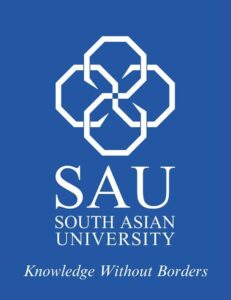
Unlock Your Future at SAU!
Hear from our Hon’ble President, Prof. K.K. Aggarwal, about why South Asian University is the perfect place to shape your dreams!
From world-class faculty to a diverse, vibrant campus—SAU is where knowledge meets opportunity.
Watch the video and take the first step towards an exceptional academic journey!
Admissions Open for 2025-26
Undergraduate & Dual Degree Programs – B.Tech CSE (Al & ML, Data Science, Cybersecurity, Business Systems & Intelligence), Integrated BBA-MBA, Integrated BS MS, Interdisciplinary Sciences, BTech Mathematics and Computing), & more!
Postgraduate Programs – MSc, MA, LLM, MCA, MBA, MTech, and MS in cutting-edge fields.
PhD & Executive PhD – Research opportunities in Biotechnology, Computer Science, Economics, Legal Studies, International Relations, Sociology, Media, Climate Change & more!
Online Programs – BS, MS Data Science & Al, BCA (Hons), BBA (Hons), MBA, MCA, Vocal Music, Fashion Design, and more
Entrance Exam: 26th-27th April 2025 | New Session Begins: 28th July 2025
Apply Now & Shape Your Future!
Offline: [email protected] |+91 11 35656600
Virtual Campus: [email protected] |+911135656635
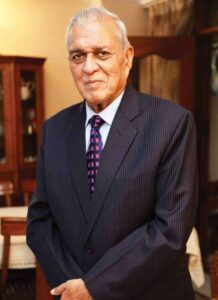
About the Chairman
Prof. K. K. Aggarwal is an Engineer by training and has been an accomplished academician and administrator. He received his PhD in Reliability Evaluation and Optimization from Kurukshetra University, Haryana. He pursued his Master’s Degree from the same university securing first position. He obtained his Bachelor’s Degree in Electronics and Communication Engineering from Panjab University, Chandigarh as the topper.
Prof. Aggarwal has served the National Board of Accreditation, India, as its former Chairman. He was the Founding Vice Chancellor of Guru Govind Singh Indraprastha University, Delhi, where he served for ten years from 1998 to 2008, leading from the front. Before this, he was the Pro Vice-Chancellor of Guru Jambheshwar University, Hisar, for three years. He is also the former Chairman of the Board of Governors, MNIT, Jaipur.
He had a distinguished career of 27 years as an academic at the National Institute of Technology, Kurukshetra, where he was engaged in teaching and research activities in Computer Engineering and Information Technology. Prof. Aggarwal has authored various books including Reliability Engineering and Software Engineering, many of which have undergone numerous rounds of reprints. He has published over 400 research papers in the domain of Electronics and Computer Engineering in academic journals of repute, about half of which are international journals.
He was associated with the Institution of Electronics and Telecommunication Engineers (IETE) serving as its President from 2002-2004. During this period, this Institution witnessed unprecedented growth and made a remarkable impact on society in general & IT professionals in particular. Prof. Aggarwal was also the President of the Computer Society of India (CSI) from 2007-2009, the President of the South East Asia Regional Computer Confederation (SEARCC) from 2008-2010 and the Sectional President (IT & CS) of the Indian Science Congress Association. He was also the Academy Professor of the Academy of Scientific and Innovative Research (AcSIR) of Council of Scientific & Industrial Research (CSIR).
Prof. Aggarwal has been invited to deliver lectures at several Universities in India and abroad, including the University of Berkley, USA; University of Cincinnati, USA; Florida State University, USA; University of Birmingham, UK and Technical University of Germany, to name a few.
Apart from his contributions in the academic field, Prof. Aggarwal has made a very strong impact in the industrial world. The industry has widely consulted him, most notable being his contribution towards the Reliability Analysis for PSLV (Polar Satellite Launch Vehicle) of the Indian Space Mission. He has also delivered lectures and conducted programmes in several leading industrial organisations in India and overseas.
Prof. Aggarwal was honoured by the Reliability Society of IEEE, USA for his services as the Guest Editor for the special issue on “State of Reliability Effort of the Indian Sub-Continent”. He was declared as the Man of the Decade, Man of the Century and Man of the Millennium by American Bibliographical Institute, USA. He was also awarded the Delhi Ratan by the All India Conference of Intellectuals. International Biographical Centre, England published his biography in “The First Five Hundred – at the New Millennium” in July 2000. The Broadcast Engineering Society of India (BESI) honoured him by conferring an Honorary Fellowship on him in February 2001 and the Computer Society of India (CSI) conferred the Fellowship to him in 2003. Prof. Aggarwal was conferred a Distinguished Fellowship in 2010 and the very First Life Time Achievement Award in 2011 by the Institute of Electronics and Telecommunication Engineers (IETE), India. Computer Society of India (CSI) also conferred the Life Time Achievement Award on Prof. Aggarwal in 2016.
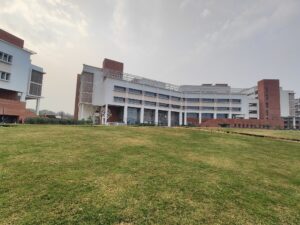
About the University
The idea of establishing a South Asian University (SAU) was mooted by the Prime Minister of India at the 13th SAARC Summit in Dhaka in 2005. The idea was for member countries to pool their resources for creation of a Centre of Excellence in the form of a University that would provide world-class facilities and professional faculty to students and researchers drawn from every country of the SAARC region.
Prof. Gowher Rizvi, the well-known historian, scholar and academic from Bangladesh was entrusted with the task of preparing a Concept Paper for SAU. Prepared after a series of consultations across the SAARC countries, the Concept Paper was submitted to the SAARC Governments to elicit their views. The idea of a South Asian University found favor in all SAARC Member States and an inter-ministerial Agreement for Establishment of South Asian University was signed on 04 April 2007, during the 14th SAARC Summit in New Delhi.
The Government of India established a Project Office of the SAU in the year 2008, of which Prof. GK Chadha, a former Vice Chancellor of the Jawaharlal Nehru University, New Delhi, was appointed the Chief Executive Officer. A SAARC Steering Committee comprising members from all SAARC countries was constituted to oversee the establishment of SAU. Various Inter-Governmental Task Forces were also constituted and entrusted the job of framing the Rules and Regulations to govern the University as also the Academic Structure and the Business Plan for the proposed University. All University documents prepared jointly by the SAU Task Forces were submitted to SAARC Secretariat and were approved in the 16th SAARC Summit held in Thimphu in 2010. The SAU Project Office was wound up and the South Asian University opened its door to students in August 2010.
The then Indian External Affairs Minister, Pranab Mukherjee, laid the foundation stone of the SAU campus at a 100-acre plot in Maidan Garhi, Mehrauli in South Delhi on 26 May 2008. The job of preparing the architectural design of the campus and building on the campus was entrusted to a Nepalese architecture firm selected through a tough regional competition. Campus designs were finalized and various required clearances and approvals were obtained. The campus construction started in in 2014. The capital cost of establishing the SAU is being provided by the Indian government, while all SAARC member countries share the operational costs in proportions that are mutually agreed upon. Later, the University would also raise money from international financial institutions, educational foundations and donors.
A temporary campus of the University was initially set up in few buildings provided gratis by the Jawaharlal Nehru University. The campus was subsequently relocated in 2011 to Akbar Bhawan, Chanakyapuri in South Delhi. The University shifted to its own residential campus in Maidan Garhi spread across a lush green prime plot of land in January 2023.
Degrees and certificates awarded by the South Asian University are recognized by the University Grants Commission in India and by other SAARC countries. The University focuses overwhelmingly on research and post-graduate level programmes. It will ultimately have 12 post-graduate science and non-science Faculties, as also a Faculty of Undergraduate Studies. At full strength, the SAU will have 5000 students and 500 teachers. A flagship Institute of South Asian Studies will also be established in the University. Students of the University are predominantly from the eight SAARC countries. Tuition fees for them are heavily subsidized. Some students from non-SAARC countries are also admitted on full cost recovery basis. Teachers of the University are also predominantly from the eight SAARC Countries, but there is a provision for up to 20% of teachers that may be from other countries.
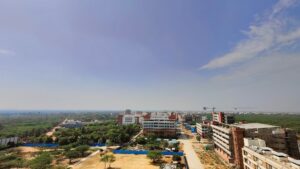
Vision of the University
The mandate of the South Asian University, as set out in the Agreement of the SAARC member states under which the University is being set up envisages that the choice of the programs of studies to be offered at this University should:
enhance learning in the South Asian community that promotes an understanding of each others perspectives and strengthen regional consciousness;
provide liberal and humane education to the brightest and the most dedicated students of South Asia so that a new class of quality leadership is nurtured;
enhance capacity building of the South Asian Nations in science, technology and other areas of higher learning vital for improving their quality of life such as information technology, bio-technology and management sciences, etc.
These three elements i.e. building a culture of understanding and regional consciousness; nurturing a new class of liberal, bright and quality leadership and building the capacity of the region in science, technology and other disciplines considered vital for improving the quality of life of the people, therefore, form the core objectives of the South Asian University.
The SAU would strive to provide world class education in keeping with the most recent international trends in University education, in terms of choice of subjects across various disciplines and pedagogical approaches to meet these objectives. Relevance will be ensured through alignment of the academic program with the University’s core objectives. Quality will be ensured through collecting the very best academics available in the world for teaching, research and peer review. In order to ensure that the SAU becomes the leading center of excellence for learning in the region, the SAU aims to draw upon the very best SAARC academics working in the region, the very best SAARC academics working outside the region; and, non–SAARC academics whose thoughts and research work are at the cutting edge of knowledge and of direct relevance to the SAU mandate. The SAU would ensure this through a set of world class incentives and facilities to attract the very best.
Besides preparing students for a career and profession, a very important function of education is to transfer the accumulated human knowledge in all fields from one generation to another. If this link of knowledge transfer ever breaks, the human culture, as we know, itself would vanish. A university should therefore aim not only at training the students for specific careers, but also consider itself as a sacred site where human knowledge is transferred from generation to generation and indeed new knowledge is generated constantly. Capability to impart knowledge throughout its wide spectrum and active research for generating new knowledge should therefore be the very basic twin aspirations of all universities, especially among highly diverse societies such as those witnessed in South Asia.
Knowledge is the most powerful means for promoting meaningful understanding of diversity, building cohesion and promoting tolerance. By providing a common forum where such knowledge is accumulated, generated and disseminated, the South Asian University aims to become the focal point for the search for common ground and socio-economic development of the region.
The South Asian University, therefore, aims to provide for programs of studies which:
- have the potential to promote regional understanding, peace and security which ultimately enhances the well being of the people of the region;
- reach newer, common and challenging frontiers in various disciplines, and inter-disciplinary outfits, usually not available in individual countries.
- lead to creation and sharing of knowledge that has the potential of creating a South Asian Community of intellectuals, endowed with expanding mutual trust and appreciation of one another’s problems
It is extremely important for the South Asian University to focus on achieving these aims because, individually, the SAARC member countries may find it difficult to provide for the transfer of all shades of knowledge for their own students. Access to a university that, due to joint efforts, ownership and common stakes of all member countries, is able to present a truly wholesome capability in all spheres of knowledge is a crucial asset for all SAARC countries. Establishment of the SAU that encompasses the diversity of the region and focuses on addressing the common academic needs to build cohesion and understanding through the generation and transfer of knowledge by building a cohort of highly educated leaders in various fields of life will have enormous long term multiplier effects for the region.
Making provision for in-house expertise in most areas of knowledge through establishment of various seemingly conventional Faculties, as described in this document, has another important purpose. In today’s world, whether it is for pursuing very basic research inquiries or for seeking solutions to emerging problems, research efforts have to be multidisciplinary. Thus, the provision of expertise in multiple basic areas ensures that an interdisciplinary effort can be initiated rapidly. These interdisciplinary efforts, focused on the current and emerging needs of the region vis-a-vis the rest of the world, will promote the niche capability of the SAU. These efforts will be organized around the three main objectives of the SAU. To reiterate, the interdisciplinary activities will be designed to meet the needs for 1) building a culture of understanding and regional consciousness; 2) nurturing a new class of liberal, bright and quality leadership and 3) building the capacity of the region in science, technology and other disciplines considered vital for improving the quality of life of the people. Objectives 2) and 3) for which the SAU has been set up also ensure that the graduates from this University will have the most marketable and relevant skills needed for the region as also for the international job market. Specialization in these niche areas will ensure that the SAU brand name for particular skills would be established and that, in turn, would bestow substantial employment benefits on the youth of the region.
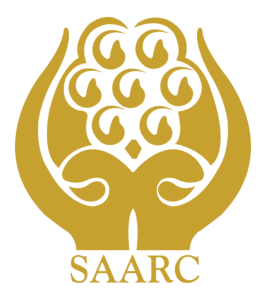
About the SAARC
SAARC, the South Asian Association for Regional Cooperation, is a regional intergovernmental organization and geopolitical union of states in South Asia. It was established on December 8, 1985, in Dhaka. The main objectives of SAARC are to promote the welfare of the peoples of South Asia, accelerate economic growth, and strengthen cooperation among its member states.
The South Asian Association for Regional Cooperation (SAARC) was established with the signing of the SAARC Charter in Dhaka on 8 December 1985. SAARC comprises of eight Member States: Afghanistan, Bangladesh, Bhutan, India, Maldives, Nepal, Pakistan and Sri Lanka. The Secretariat of the Association was set up in Kathmandu on 17 January 1987.
The objectives of the Association as outlined in the SAARC Charter are: to promote the welfare of the peoples of South Asia and to improve their quality of life; to accelerate economic growth, social progress and cultural development in the region and to provide all individuals the opportunity to live in dignity and to realize their full potentials; to promote and strengthen collective self-reliance among the countries of South Asia; to contribute to mutual trust, understanding and appreciation of one another’s problems; to promote active collaboration and mutual assistance in the economic, social, cultural, technical and scientific fields; to strengthen cooperation with other developing countries; to strengthen cooperation among themselves in international forums on matters of common interests; and to cooperate with international and regional organizations with similar aims and purposes.
Decisions at all levels are to be taken on the basis of unanimity; and bilateral and contentious issues are excluded from the deliberations of the Association.
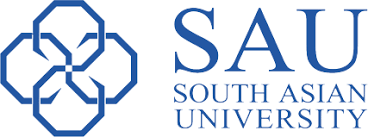
Contact details of SAU
How to Reach
By Metro: One needs to get off at Chhatarpur Metro Park of the Yellow line that goes from Rajiv Chowk to Huda City Centre in Gurugram. You need to take the foot-overbridge on the MG Road to cross over to the other side of the road. Alternatively, you can get off at Qutub Minar Metro Station too. Auto-rickshaws, battery rickshaws, grameen seva vehicles are available for hire, which will take you to the SAU campus. If you hire them on a sharing basis or take a bus from the Chhatarpur Metro Station, you can get dropped at Radiance Motel in Satbari, from where you can walk to the campus, which is about one kilometer. Distance: 4.5 Km
By Car: The most identifying landmark near the SAU campus is Chhatarpur Metro Station. From there you can take the road that goes towards the Chhatarpur Mandir. Continue going towards Satbari until Radiance Motel comes on your left hand side after 3.4 km. You need to take a an immediate left from there and continue going on the Gaushala Road for about one kilometer. From the T-point, you need to take a slight left and you will see the SAU Gate on your right. Distance: 4.5 Km
Note Map directions may prompt you to turn left prior to reaching Gaushala Road. Please disregard the same and continue towards Satbari until you reach the entrance of Gaushala Road. You may refer to the route highlighted in blue in the map on the top left which also depicts the possible prior left turns on the map which should be avoided.
Address & Contacts
South Asian University
Rajpur Road, Maidan Garhi, New Delhi – 110068
Contact Us:
+91 (11) 35656500
For Admission Query :
+91 (11) 35656600
dir.adm-exam(at)sau.int
mallesha(at)sau.int
For Virtual Campus :
+91 (11) 35656649
Website: https://sau.int
Twitter/X: https://x.com/southasianuni
Facebook: https://www.facebook.com/southasianuniversity
Instagram: https://www.instagram.com/southasianuniversity
LinkedIn: https://www.linkedin.com/school/south-asian-university
Youtube: https://www.youtube.com/user/southasianuniversity



